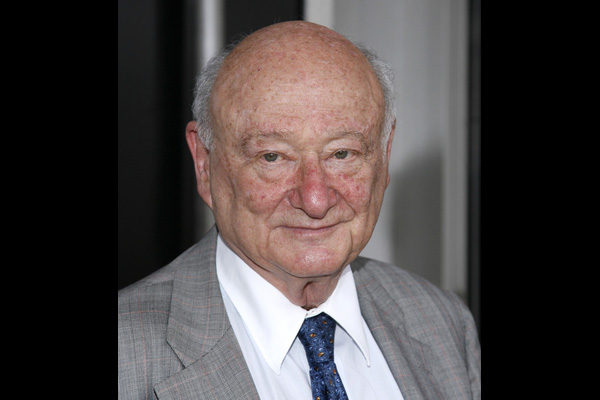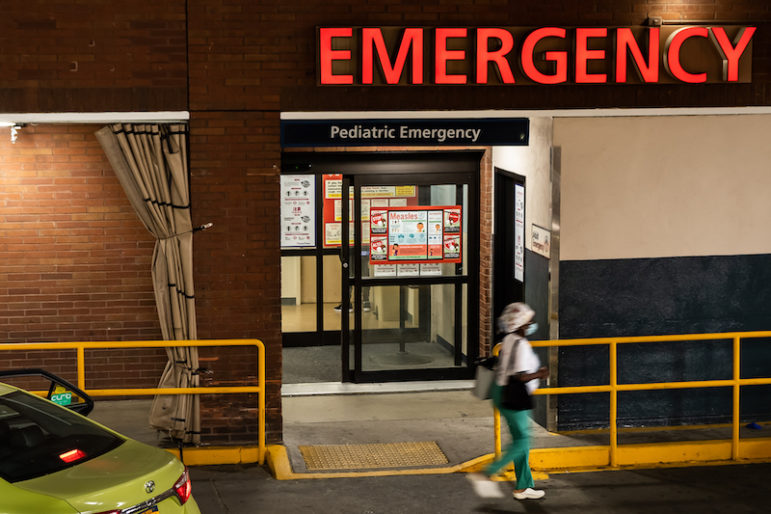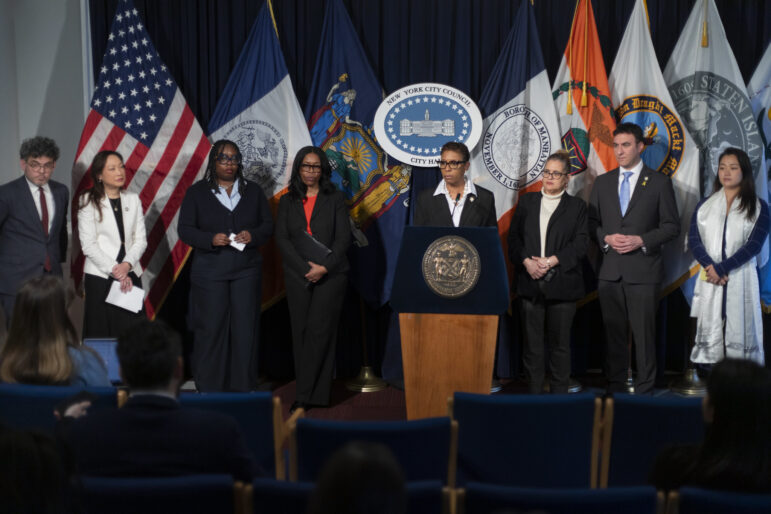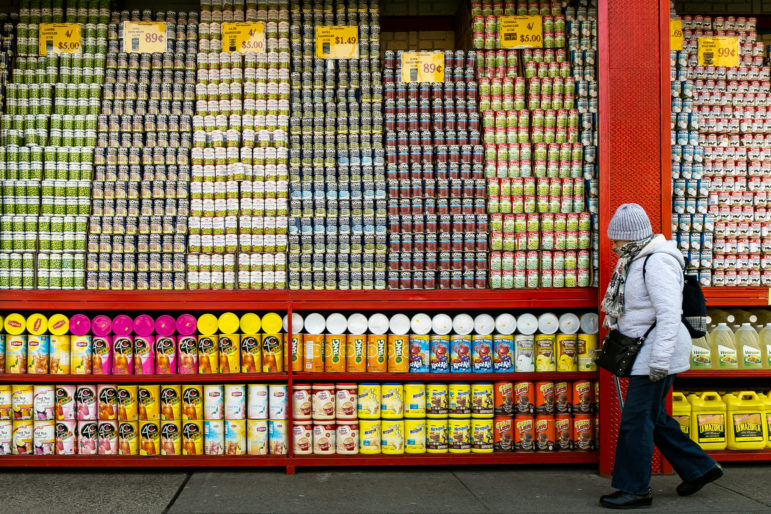
Photo by: Shutterstock
In 1989, as Mayor Koch sought a record fourth term in office, City Limits invited all the mayoral candidates to submit 1,200-word summaries of their plans for dealing with some of the pressing housing and land-use issues of the day–issues that ring very familiar as a new mayoral campaign begins in 2013: rising homelessness, a feeling in some neighborhoods that they’ve been overdeveloped, a sentiment in others that they’ve been unfairly burdened by drug treatment centers and shelters. Here is what Koch wrote:
Housing Crisis
At its inception, the Reagan administration declared an end to the federal government’s historic commitment to build low and moderate income housing. My administration was not immobilized by the federal retreat. In 1986, the city responded with its plan for replenishing the housing stock for homeless, low, moderate and middle income people. My 10-year, $5.1 billion housing plan calls for the development of 252,000 housing units by building them from scratch rehabilitating abandoned or seriously deteriorating buildings and investing in preventive repairs to save both private and publicly-owned buildings before they fall to ruin.
Highlights of the plan include: the creation of 84,000 new units, including 47,000 through the reconstruction of every vacant, structurally-sound building in the city’s possession; the distribution of 60 percent of the housing to families earning below $19,000 (low income), 27 percent to families earning no more than $32,000 (moderate income) and 13 percent to families earning between $32,000 and $53,000 (middle income). Under the 10-year plan, we will be creating 15,000 new apartments for the homeless. Through other programs in the operating budget, we will produce 6,000 more homeless apartments.
We are meeting these goals.
Entire communities in the Bronx, Harlem and central Brooklyn are undergoing a renaissance, as apartments are produced, advertised in local and general circulation newspapers and rented through a lottery system to deserving New Yorkers. Some 1,000 new apartments a month are coming off our production line. The money we have budgeted for this program is growing every year and is indeed being used to produce housing. In fiscal year 1988, we spent $456 million, which is 110 percent of the money we budgeted. This year we will spend $640 million. Next year, we are projecting spending on housing construction $850 million. What does this mean in actual production figures? In two years, our housing program has generated 17,000 new housing starts. We are doing twice as much in New York as the next 10 largest cities in America combined, more than the federal government at the peak of its own housing program in the early 1970s. This program is possible for two reasons. First, I made the unprecedented decision in 1986 to spend city capital funds on housing construction. New Y ork City is virtually alone among Amencan cities in making this commitment. Second, the city’s return to fiscal good health restored our ability to borrow the funds to build homes for hundreds of thousands of New Yorkers. Without the specific policy decision to build and the financial confidence of the market, the city could not be building housing.
Balanced Development
Without new development, New York City would stagnate. In 1977, the year before I took office, more office space was built in Morris County, New Jersey than in the entire City of New York. Our efforts to encourage development have produced construction and office jobs, revenue for the city and commitments by corporations to remain in New York. Development generates the revenue that helps provide services. Over 20 years, residential and commercial construction in the city will produce $23 billion in city tax collections. And, though some have complained about the tax abatements that have been granted for this development, they total just $1.5 billion. In effect, we have invested $1.5 billion for a $23 billion return directly to the city’s coffers.
Without city guidance, the private market would concentrate its investment in certain areas and ignore others. Therefore, the fundamental development policy has been “balanced growth”-balanced within communities and balanced citywide. Through this policy, we have redirected growth to areas of the city that would benefit most. Our most important tools have been tax policy, zoning and our investment in infrastructure and housing. We have used these tools to create new commercial sub-centers outside of Manhattan. The most visible products of our policy are Citicorp in Long Island City, Queens, the numerous economic development projects in downtown Brooklyn and Fordham Plaza in the Bronx. In these and other cases, we have not promoted growth for growth’s sake, but to enlarge the city’s economic base by creating jobs and businesses citywide.
When we determine that an area no longer needs incentives for growth, we remove the tax and zoning incentives that helped create the initial development, as we did in east midtown. At the same time, we must preserve what is unique about New York and its neighborhoods. Striking the right balance between growth and preservation is a judgment call about which reasonable persons may differ from project to project. In making decisions about individual projects, I am guided by the City Planning Commission’s principle of “contextual zoning”: every new development should relate to the general scale and character of what surrounds it, in terms of its height, bulk, density and frontage. This principle has shaped my opposition to plans for several major
developments. For instance, I insisted that the developer of Brighton-by-the- Sea in Brooklyn reduce the height and density of the project before I would be willing to support it. With regard to Riverwalk on Manhattan’s East Side, I will not support the inclusion of hotels and conference space as part of the development. In both of these cases, the developers are redrafting their plans to account for my position. I oppose Donald Trump’s plans for Television City on the West Side and will only support a project like the original proposal for
that site, which was less than half the size of Television City. I supported the Board of Standards and Appeals ruling that a developer must remove 12 stories from a 31-story building on East 96th Street that was overbuilt in violation of the zoning resolution. Even as I have encouraged growth in the city, I have defended the character of communities and the qualities that make New York special. The key is balanced growth.
Community Role
Communities must be consulted, through their elected officials and community boards, on the local siting of facilities. However, such consultation should never allow for a community veto. In siting undesirable facilities, the city is discharging its primary responsibility to meet citywide service needs. Even when these facilities are distributed as widely and equitably as possible, the host community will often feel a burden. Community opposition to the placement of a shelter, a jail, an AIDS facility or a resource recovery plant is understandable. For many residents, these facilities do not enhance the quality of life in a neighborhood. But the city is required-both legally and morally-to meet the need for jail cells, to dispose of its garbage, to care for AIDS patients, to shelter the homeless. In fact, the pressure to address the problems of AIDS, drug dealing, garbage disposal and homelessness often comes from the very groups that later oppose the siting of the necessary facilities in local communities.
Ultimately, citywide needs have to be met. Few communities volunteer to host the facility that will meet them. In publicizing our plans for facility siting, I have repeatedly asked local elected officials or community groups to suggest alternatives to the locations that our agency experts have found. I would prefer to implement a reasonable alternative provided by the community, instead of imposing our plan. Yet, the most frequent suggestion we get is, “Anywhere but here.” Instead, we are criticized for bad planning. What planning process could accommodate the opposition of communities to the creation of facilities that must be kept large enough to meet the extraordinary demand for city services? As mayor, I have been praised for doubling the number of city jail cells in the last five years. Yet, communities as diverse as Bay Ridge and the West Village are adamant in their opposition to our siting jail barges locally.
The City of New York provides more services to homeless people than any city in the country. Communities do not want homeless shelters. The city generates so much garbage that we are running out of landfill. Communities demonstrate to block resource recovery plants. I do not question the motives of community leaders opposing these facilities. Indeed we prefer to incorporate suggestions from local leaders into our planning, so these facilities are better integrated into the community. But a mayor cannot allow his sympathy for a particular community’s concerns to override his fundamental responsibility to provide services for all New Yorkers.
To read the rest of this 1989 article, visit City Limits archives here.







